Sustainable Data Collection: Climate Monitoring in the Caribbean
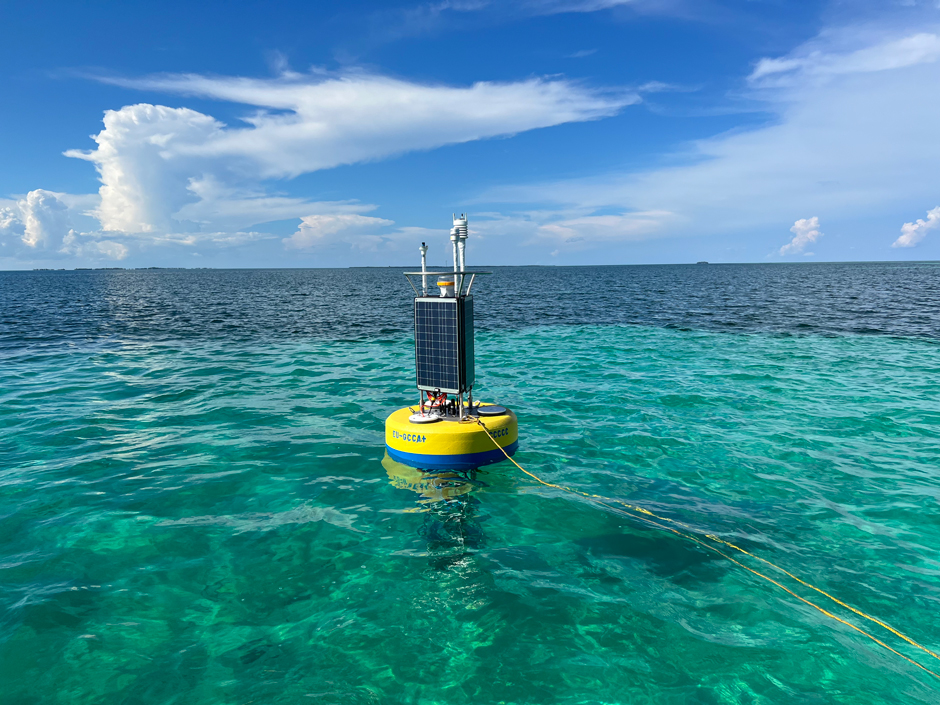 A CB-950 deployed in Belize. (Credit: Albert Jones / CCCCC)
A CB-950 deployed in Belize. (Credit: Albert Jones / CCCCC)Environmental monitoring in the Caribbean may be essential, but it has also historically been placed on the back burner. Albert Jones, Instrumentation Officer for the Caribbean Community Climate Change Centre (CCCCC), explains, “Data collection itself is not what is considered one of those sexy activities where you can easily get funding.”
Still, monitoring the water surrounding island nations is necessary to protect residents and the environment. The CCCCC works to establish environmental monitoring networks and systems in the Caribbean. One aspect of Jones’ work centers around data buoy instrumentation and deployment,—equipment that will be used to support Ecoforecasts for Coral Health Monitoring and to provide valuable environmental data to the public.
Most recently, Jones completed the last of four stations in Tobago, Barbados, the Bahamas and the barrier reef of Belize, funded by the European Union. Earlier partner projects with the USAID have allowed systems to be installed in St. Kitts and Nevis, Antigua and Barbuda, St. Lucia, Grenada and St. Vincent and the Grenadines.
Meeting Data Needs in the Caribbean
Working around the staff shortages and other logistical challenges presented by the COVID-19 pandemic introduced a series of problems for the CCCCC as these systems require maintenance. The systems also have to be easily accessible by the locally responsible agency in the case of severe weather events so that they are able to move the systems to a safe storage location.
Despite the challenges, the CCCCC has been able to install hundreds of Environmental Data Collection Stations, Terrestrial and Marine, over the years. Not only has the CCCCC contributed to the installation and curation of these networks, but also to the yearly maintenance, which keeps these systems online.
Before the data from the marine stations can be used for ecoforecasting, a robust and accurate system must be developed in the Caribbean so that NOAA’s Atlantic Oceanographic and Meteorological Laboratory (AOML) can publish the findings to the greater public.
“We’re asking them to be part of the information package that can guide marine park managers, coral health enthusiasts and operators on how to best protect the ailing barrier reefs across the Caribbean, as most of the islands have been experiencing quite a bit of bleaching,” explains Jones.
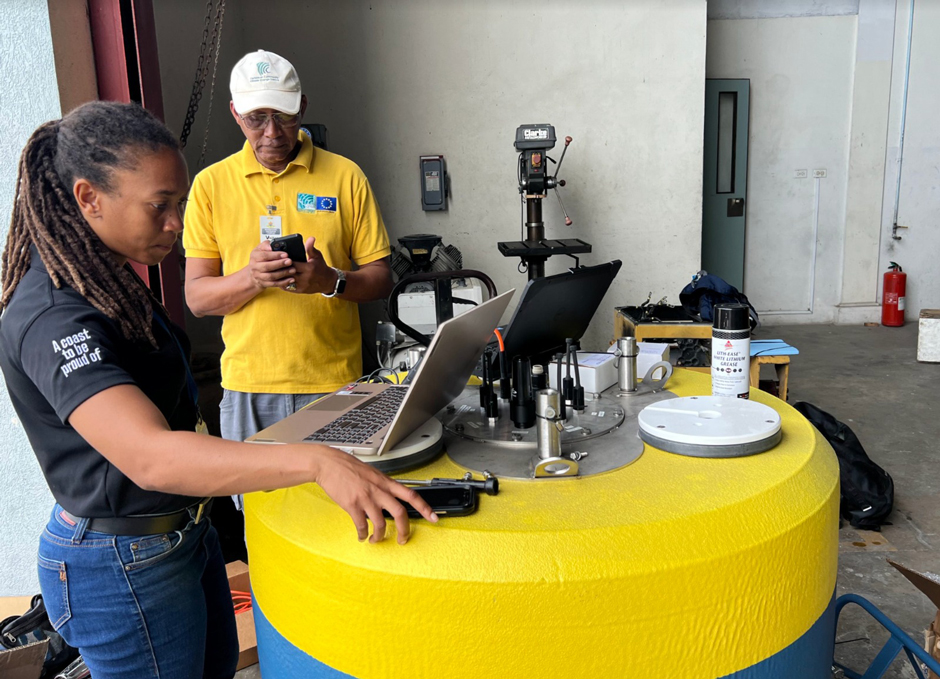
Albert Jones and Shoneé Howell (Barbados Coastal Zone Office) setting up the CB-950 before deployment in Barbados. (Credit: James Hendee / CCCCC)
Such trends come as no surprise to scientists like Jones, who have spent decades monitoring the climate, but up until recently, many of these concerns surrounding coral reefs failed to make waves with the public. A new report from the Intergovernmental Panel on Climate Change stated that July, August, and September have been the hottest they have ever been.
Jones expands, “We are all cognizant of the fact that our corals are at stress at this point in time due to these high water temperatures, so we are hoping that the information and data that we are gathering will provide the necessary guidance for decision making, as well as for better management of our natural resources, knowing that corals are not just a tourist attraction, but also an extremely important spawning grounds for many fish species out there.”
In the wake of more climate-related research being published and international efforts focusing on environmental protections, monitoring has gotten a bit more attention. Coral reefs are critical habitats for thousands of species that humanity relies on for food. Protecting the reefs and spreading environmental data regarding the reefs works toward solving a major contributor to region’s food security issues.
Monitoring Climate Conditions with Data Buoys
With a background of more than 35 years in the meteorological sphere, Jones transitioned to electronics in 1980, where he was tasked with building a network of environmental monitoring stations in Belize and ensuring that they met international meteorological monitoring guidelines. He also worked in related sectors to curate monitoring systems.
Jones explains, “We had a base network that included agrometeorological stations for the agriculture sector, climatic stations for folks that were monitoring for forest fires, as well as stations that contributed to the regular Weather Forecasting for the general public.”
He continues, “We have quite a bit of interaction, not only from the Caribbean Sea itself, but we have a whole host of terrestrial microclimates, that need to be addressed for the different sectors. So that was something that spurred us into having a more dense network of environmental monitoring stations.”
Early renditions of the coral reef early warning system used in the Caribbean utilized exceptionally larger monitoring buoys, which gathered the needed data but also created several logistical concerns. For example, these buoys were quite costly, often required more maintenance and were a burden on local agencies.
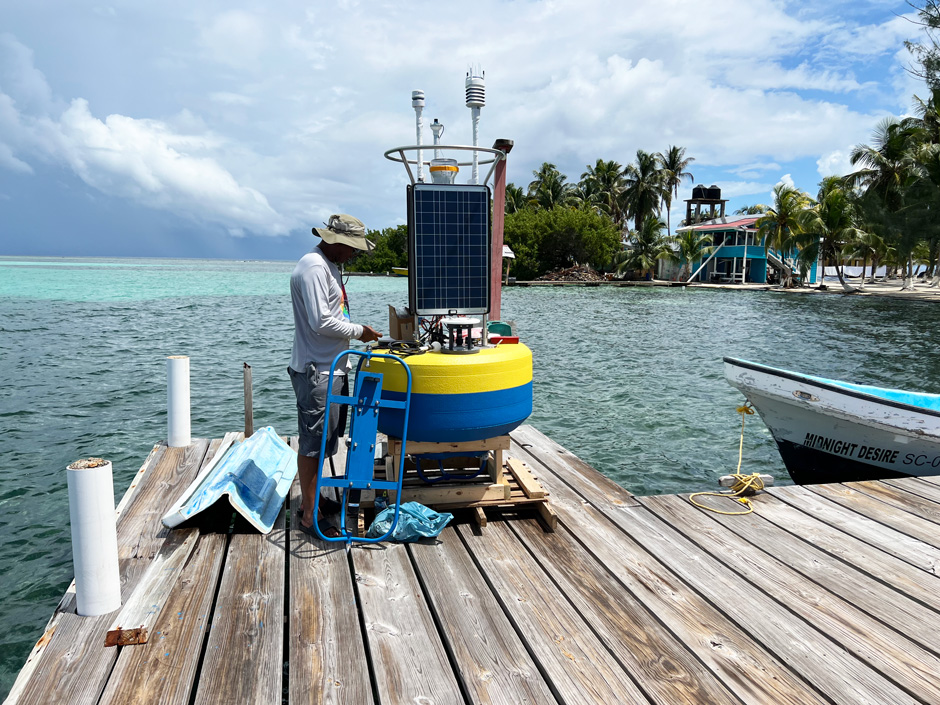
Albert Jones preparing the CB-950 for deployment in Belize. (Credit: Kai Wulf / Saba Conservation Foundation)
Additionally, anything above a category two hurricane could possibly cause the moorings for these large buoys to break, damage the attached instrumentation and possibly be a hazard for locals facing an influx of water and ocean debris. Moving these large buoys to a safe harbor was challenging due to the size of the buoys.
In 2017, a colleague with NOAA’s AOML recommended NexSens buoys as they’d had success with the systems in Florida. The NexSens CB-950 data buoy was less expensive, lighter-weight and durable, meeting everything Jones was looking for in the project.
“NexSens came in and gave us the opportunity not to have only four sites, but to have five sites, because of the lower acquisition cost. And it was a real one stop shop, where [NexSens] integrated the whole system for us. It was easy plug and play,” states Jones.
He expands, “For us, the buoys are configured ready to be put out in the field, which is something that has made our lives a whole lot easier, where we don’t have to go through a full programming course to actually deploy the system—like we did from the previous supplier. So those sorts of dependencies on a full integration that NexSens actually provided, gave us a lot more confidence in having a working system.”
The network of CB-950 buoys and X2-CBMC provides continuous data, even while the systems are being deployed and years after being installed. Equipped with a Sea-bird CTD, and LI-COR Li-193 underwater PAR for the marine variables; and Airmar 200WX, Vaisala WXT536 and LI-COR Li-190 PAR for meteorological variables, the buoy and sensors are durable for marine conditions. The previous system observed a large variety of parameters, though not all of these were determined to be necessary for coral reef early warning information produced by the ecoforecast program.
“We made it a more manageable system where we collected what we needed, rather than have excess information that was practically just sitting there for future research. So we said, ‘Let’s concentrate on what we can use as data for the information needed now,’” explains Jones.
The sensors gather a more narrow set of data, but this data is more relevant and higher quality thanks to the more manageable system. The X2-CB data logger used transfers data via cellular transmission every 10 minutes to Jones even when he is elsewhere in the Caribbean.
The smaller system is also more manageable for the locals who are responsible for the system. Not only is Vaisala familiar to many in the Caribbean due to the company’s presence in land monitoring systems, but the size of the buoys makes moving them in for storm events much more manageable. On the off chance that a buoy is displaced during a storm event, the Airmar complete weather station includes a GPS that allows for the buoy to be located.
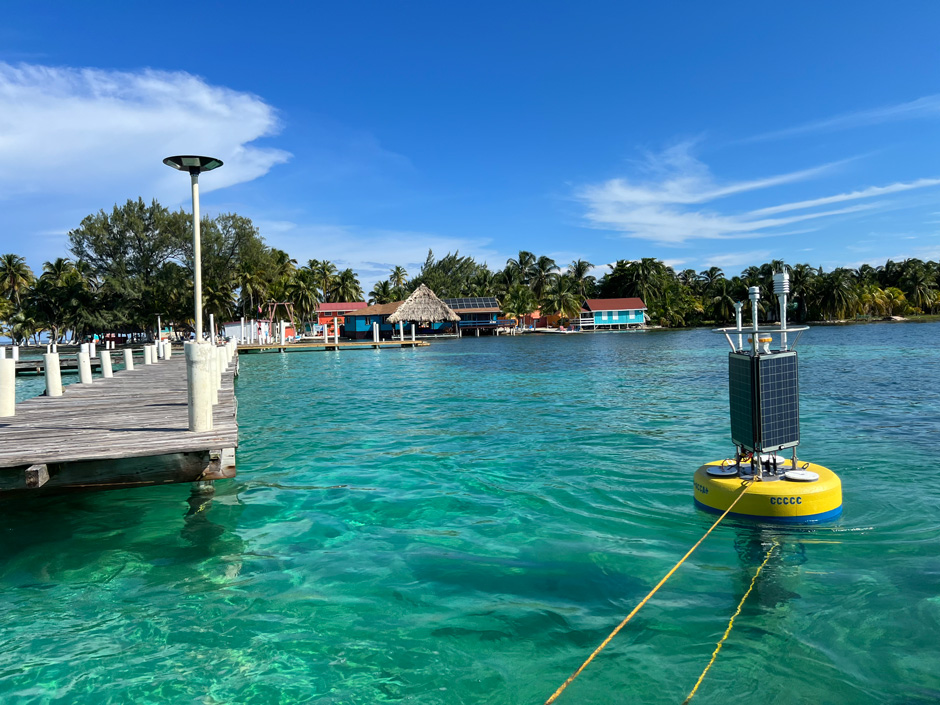
A CB-950 being pulled for deployment in Belize. (Credit: Albert Jones / CCCCC)
The Future of Climate Monitoring in the Caribbean
Once the systems are well-established and functioning in the Caribbean, Jones hopes to make the data easily accessible to the public. The goal is for anyone with a cellphone to be able to view the data gathered by the data buoys, informing not only local officials but also citizens of current conditions.
The greatest challenge to continuing monitoring work in the Caribbean is that data collection isn’t very popular with politicians who decide on the amount of money allocated to each public initiative. In every system he designs, Jones has to consider the short and long-term costs of the system.
Jones explains, “We always say that it’s best to have no data than bad data, because bad data gives you the completely wrong picture of what is happening out there. So rather than giving wrong information, we prefer to not have that information to skew things in the wrong direction.”
While a large number of systems equipped with a host of sensors may gather a larger quantity of data, the system must also be sustainable. More than the initial purchase, the networks require maintenance that must also be considered in the budget.
Unfortunately, data collection isn’t something people campaign on and doesn’t garner votes, putting it high on the list of activities that may lose funding. Public investment in data collection is finicky and can weigh heavily on professionals trying to protect natural resources. Despite this, Jones is hopeful and dedicated to protecting reefs in the Caribbean.
“I have a passion for data collection—I see the value of what data does for information. And the thing is, in our field, where we are trying to downscale global models to regional models, to national models, that can only be achieved with data—we cannot think that we can guess our way along,” states Jones.
He continues, “[Data collection is] one of these things that they tend to say, ‘let’s see if we can do with less.’ And then that becomes a problem—but, data collection has been my passion. I’ve been dealing with this for some 40 years. I enjoy what I’m doing, so as long as I get some support, I will keep pushing on.”
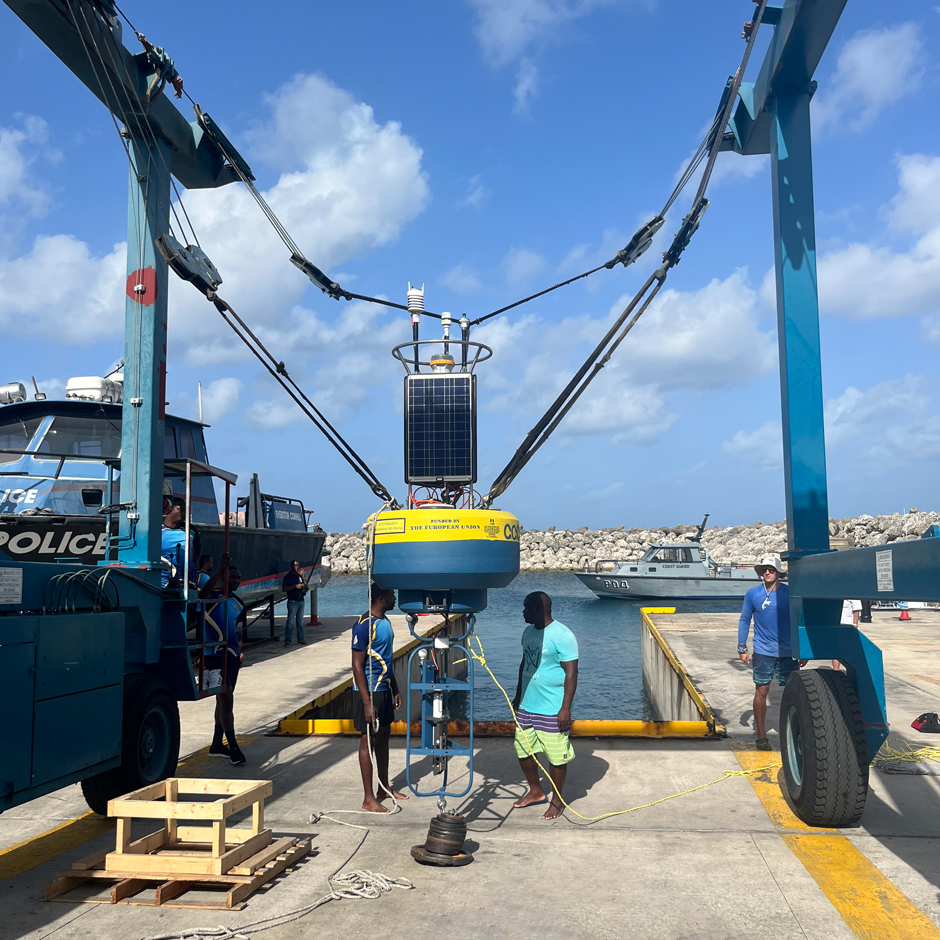
A CB-950 being lifted by a crane for deployment at the Coast Guard Base in Barbados. (Albert Jones / CCCCC)




0 comments